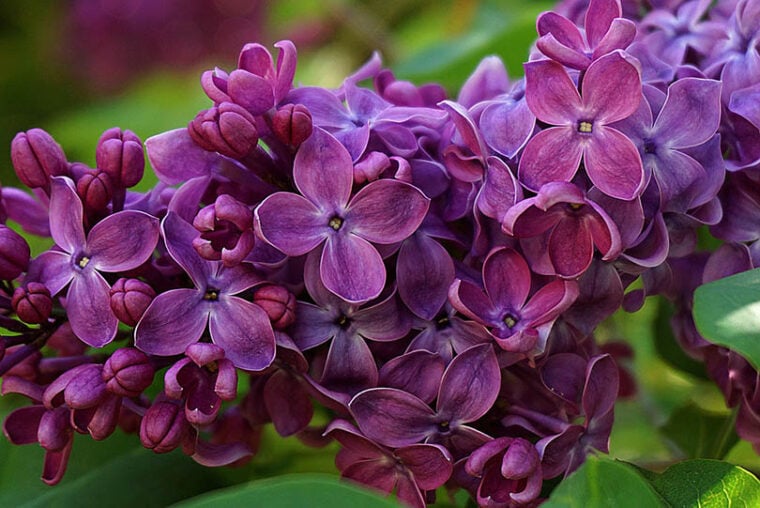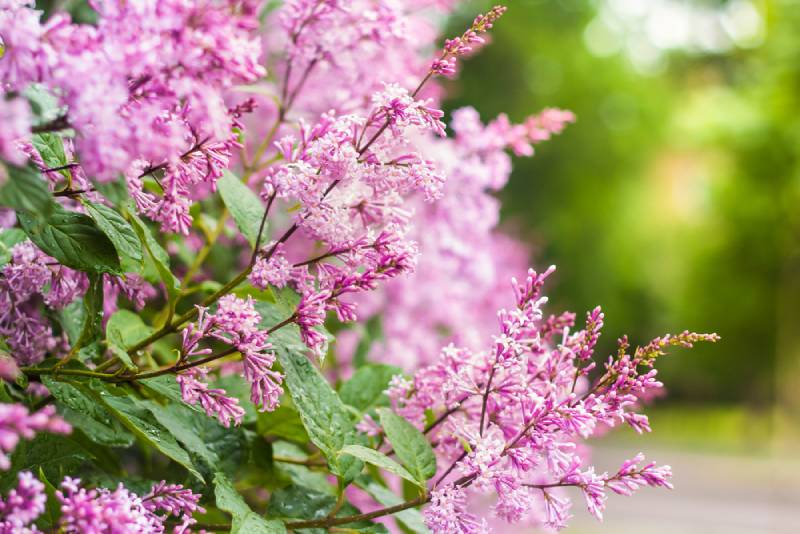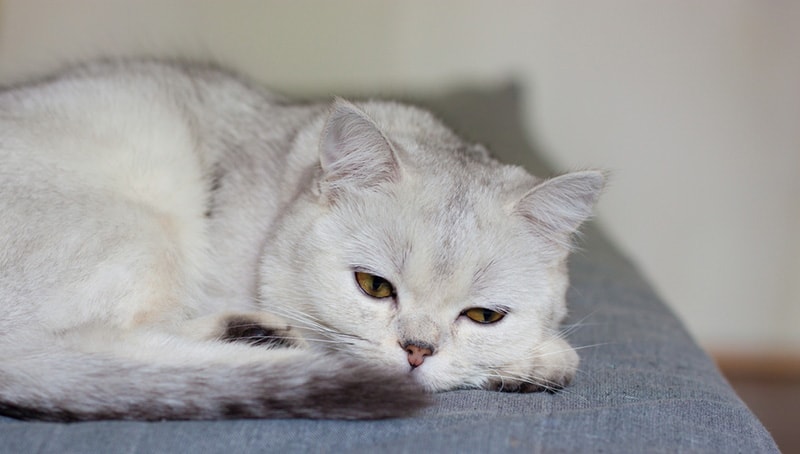
Click to Skip Ahead
If it’s time to update your landscaping, a beautiful and fragrant lilac tree might be one you consider planting. However, if you have cats of your own or neighborhood felines who visit your yard, you’ll want to avoid adding any toxic plants to keep them safe. While most lilacs are non-toxic, an unrelated tree commonly called the Persian lilac (Melia azedarach) is poisonous to cats and other animals.
Keep reading to learn more about which lilac to avoid, how to identify the plant, and the signs your cat may have been poisoned. We’ll also give you tips to keep your cat safe from toxic plants.
Persian Lilac: The Toxic Cousin
Most lilacs are part of the Syringa genus, which fall within the Oleaceae, or Olive family. This family includes most of the species frequently used in ornamental landscaping, such as the common lilac (Syringa vulgaris) and the Korean lilac (Syringa meyeri) and these are not toxic to cats.
Persian lilacs, however, are part of a different genus entirely. Its full genus-species name is Melia azedarach. This species is part of the mahogany family (Meliaceae).
Persian lilac is just one of the common names for this plant.
The bark, leaves, flowers, and fruit of the Bead Tree are toxic, and the ripe berries are the most dangerous.
To further confuse the issue, there is a Syringa species of lilac also called the Persian lilac (Syringa x persica) which is not toxic to cats. Check the scientific name to confirm whether you’re dealing with the safe or toxic version of the Persian lilac.

How to Identify Toxic Persian Lilacs
If you’re shopping for ornamental trees, the quickest way to identify the toxic Persian lilac is to look at the scientific name, which is usually listed on a tag or label. In some parts of the United States, Chinaberry or Persian lilac grow wild as an invasive species.
The toxic Persian lilac trees grow 30-40 feet high with dark brown bark and green leaves that turn yellow in the fall. They produce small, star-shaped pink and purple flowers that closely resemble true lilacs in spring and summer. These fragrant flowers give way to small, round, wrinkled yellow-green fruits.
Signs Your Cat Has Ingested Toxic Persian Lilac
The toxic elements in this species are called Tetranortriterpenes or meliatoxins and affect the nervous system. This tree is toxic not only to cats but also to dogs, horses, and even humans. It is poisonous only if eaten and signs of toxicity worsen with the volume ingested.
If your cat ingests parts of this plant, you may notice the following signs:
If you notice any of these signs, contact your veterinarian immediately. You won’t always see your cat eating or chewing on the tree, but if you do, try to bring a sample of the fruit or branches to help your vet confirm what type of toxin they’re dealing with.

Keeping Your Cat Safe from Toxic Plants
The simplest way to keep your cat safe from toxic plants like the Persian lilac is not to grow or keep any in your yard or home. That’s why it’s vital to determine whether a plant is toxic before you consider buying it. If you move into a new home with established landscaping, check for any problem plants using the ASPCA’s list of toxic and non-toxic plants.
Keep your cat indoors or supervise them carefully if they’re outside to ensure they can’t eat or chew on a Persian lilac or any other toxic plant. Use physical barriers like fences or deterrents like motion-activated lights and sprinklers to keep stray cats out of your yard and safe from toxic plants.
Inside, keep your plants out of reach of your cat, even if they’re non-toxic, and don’t have any toxic plants in the house full stop e.g. lilies. Pesticides or fertilizers may be toxic to your cat, and they can easily knock over and break a vase, putting themselves at risk for injuries.
Consider growing cat grass if your cat enjoys snacking on greenery. This precaution keeps your ornamental plants safe and provides your cat with a source of enrichment.
Conclusion
Most species of lilacs are safe to grow around cats, but avoid planting the toxic Melia azedarach tree, sometimes known as the Persian lilac. Learn to recognize the characteristics of this tree to keep your cat safe, and contact your vet if you spot any signs your pet has eaten any part of it. Before keeping a plant or flower in your home, make sure it’s non-toxic to cats. However, remember that chewing or ingesting safe plants may upset your cat’s stomach. Discourage your cat from eating plants and consider offering an alternative such as cat grass or catnip toys instead.
Related Reads:
Featured Image Credit: Nowaja, Pixabay








